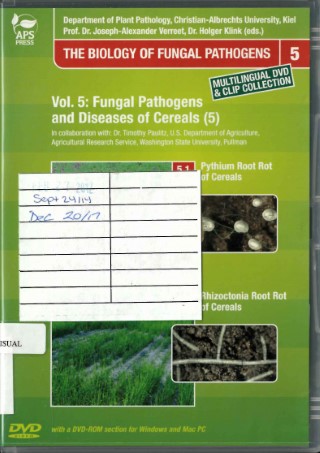
DVD
|
Fungal pathogens and diseases of cereals. 5 /
Copies
1 Total copies, 1 Copies are in,
0 Copies are out.
Title
Fungal pathogens and diseases of cereals. 5 /
Call No
SB 733 F86 2009
Subjects
Language
English
Published
St. Paul, Minn. : APS Press, c2009.
Publication Desc
1 DVD (19 min.) : sd., col. ; 4 3/4 in. .
ISBN
0890543795
Series
Dimensions
4 3/4 in. .
MLA
APA
Chicago
0
/
0







